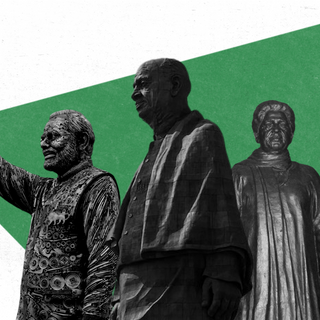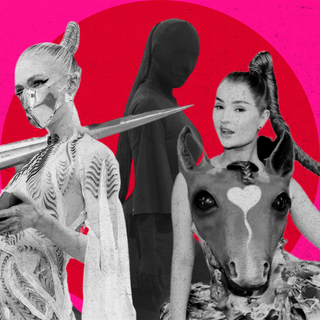
Can’t Let Go: Of the Self‑Growth in ‘Aisha,’ Despite the Bratty Rich Girl
It’s easy to love the fashion and hate the protagonist in “Aisha,” but you can’t help rooting for her friendships and sincerity.

In Can’t Let Go, we revisit the nostalgia around our favorite pop culture moments that haven’t aged well.
There is a pile of reasons to dislike Aisha. The unbearable adaptation of Jane Austen’s world to a South Delhi dome of life; the one-dimension characters with little acting chops; the superficial exchange and narrative; the patina of wealth in every frame.
See, Aisha knows it fizzles out as it pursues the intricacies of a wildly interesting character. It is doomed to be judged as a reflection of its origin Emma and the world in Highbury. That, however, shouldn’t stop us from acknowledging the subtle wins the movie registers along the way.
For one, the movie opens up a dazzling world of fashion on the screen. I say this with the zany tune of “Suno Aisha” persisting in my mind, a visual of Sonam Kapoor stepping out of her yellow Beetle, decked in a silver and lilac lehenga. A colleague concedes when expressing her love for the movie: “The inaccessibility of the wardrobe choices don’t even matter to me.” The Chanel tweed skirt suit; the vintage two-piece Christian Lacroix when Aisha meets Dhruv; or the white ruffle dress at the polo match. It is the second-hand thrill of watching something beautiful and aspirational, like a work of art. The characters are as pertinent to the story as Aisha’s luxe brand-dominated wardrobe, a visual I do not contest.
It is also this fashion that makes Aisha a subject of criticism for many. Some part of it is warranted; the takeaway of gorgeous dresses over the nuances of an Emma-like character makes Aisha an average adaptation at best. My gripe is with any objection that casts away the movie off as a “chick-flick.” The movie’s subject matter revolves around women, fashion, and friendships; the presumption that these are naturally unimportant matters and must be taken in stride is demeaning and unfair. Aisha nitpicks sartorial choices, identity, and mistakes.
I realize in defending Aisha, I also protect her mistakes. Jane Austen’s Emma is a “good-naturedly meddlesome with too much privilege and too little vocation. But for all the advantages bestowed upon her, Emma is a restless creature who offsets her longings and loneliness with her preoccupation at playing cupid,” journalist Sukanya Verma notes in her description. Emma — Aisha — are flawed people by any definition. Others for them are dispensable; they live in a cocoon of luxury and are unabashedly self-indulgent.
Yet, the essence of Emma has always been to present a complicated, complex character whose heart is in the right place, but she doesn’t know how to access it. Aisha knows that and understands that all too well. Sonam Kapoor’s Aisha has a narrow worldview, hosts her matchmaking, looks down on her friend Shefali’s “middle-class” match, and overlooks her best friend. Aisha’s ignorance and judgment are familiar too. Of course, “she didn’t know better” is a lazy excuse for anyone.
We empathize with her for finding ourselves in her shoes and wanting to be better. Perhaps what irks people is that Aisha and others live a life such as this, and any experience of richness and wealth is better left critiqued than accepting people like to watch it. Aisha defies being slotted into a “good” and “bad” female lead, who happens to be dressed head to toe in privilege.
It is the journey Aisha makes to being kinder that becomes the whole point of the narrative. These may seem like pat resolutions (of making up with your best friend or making amendments later), they are still important. Bashing the protagonist here derails any act of empathy and constructive growth. An appreciation of Aisha is incomplete without noting Abhay Deol’s presence. Deol comes close to playing the ideal Knightley. There is the right amount of banter, wisdom, and comfort.
Related on The Swaddle:
How Money Affects the Psychology of the Extremely Rich
Plus, an Indian equivalent of Highbury could not have been anywhere else other than South Delhi. The upper-middle-class aspirations, the dizzying life of social obligations, the luxury of old money. This is a pre-Dil Dhadakne Do era, dotted along the streets of New Friends or Defence Colony, depicting the life of Gymkhana memberships and yoga classes. There is a hint of sincerity in representing the hypocrisies and personal preoccupations. The conversations and friendships aren’t reserved for the silver screen. “It’s trashy, but it’s beautifully trashy. Almost like the food and conversation at a long Delhi brunch,” journalist Kaveree Bamzai wrote.
Similar to the novel, the matchmaking craze signals the status quo considerations all too well. Aisha’s motivations to find partners for people stem from two things: to keep herself occupied and to conform to the social obsession with marriage. The urban mating game does echo the social divide; the “small-town girl” in the role of Shefali, who is in search of a husband, is not unimaginable. The realism is rather striking.
Aisha is a conscious component of Emma’s legacy. The origin story has a strong character who refuses any aspect of matrimony. She is lost but self-assured, confused but good-hearted. It depicts a hypocritical society unaware of its own biases but makes sure the viewer knows those prejudices. Aisha occupies a small space in this literary and cinematic life, but a respectable one.
Lastly, at the most visceral level, Aisha is comfortable. The series of weddings, engagements, parties, and trips make it easy to escape, demanding very little of us. So even if Aisha doesn’t count as the best adaptation, some elements win in telling what Emma might have looked like in the early 2010s.
The movie is reserved, and on the watchlist for days, one desires an extra scoop of sartorial comfort. Aisha is not as “clueless” as one may peg it to be; we’re not letting it go just yet.
Saumya Kalia is an Associate Editor at The Swaddle. Her journalism and writing explore issues of social justice, digital sub-cultures, media ecosystem, literature, and memory as they cut across socio-cultural periods. You can reach her at @Saumya_Kalia.
Related


What Explains Societal Obsession With Erecting Statues in a Post‑Truth World?
